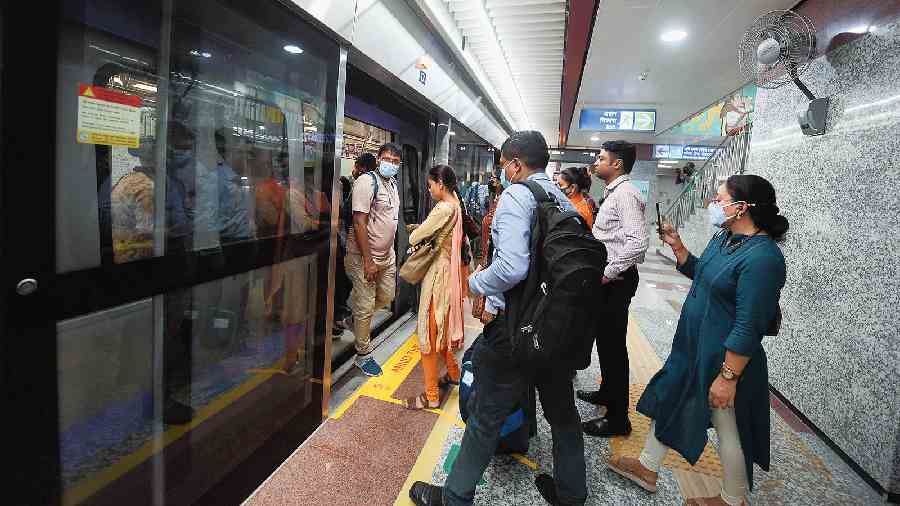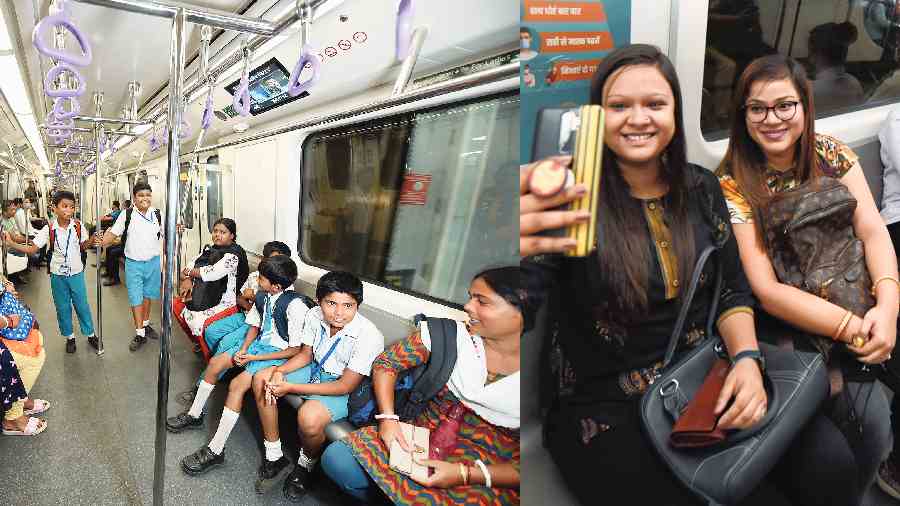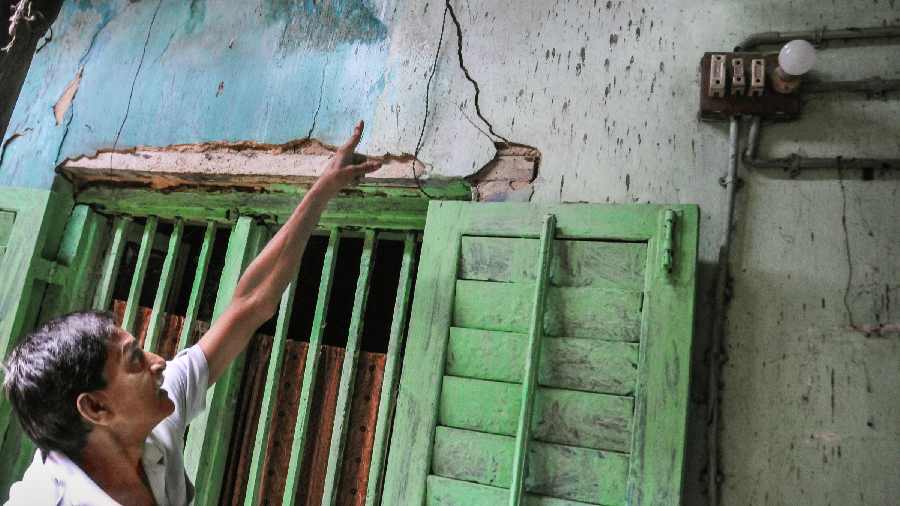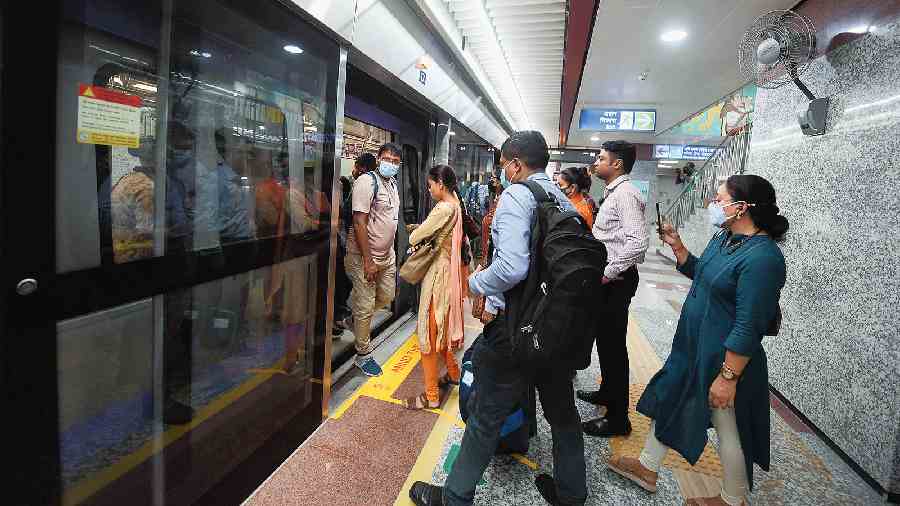A sleepy Metro corridor sprang to life on Thursday with the start of commercial services from Sealdah on the East-West route.
Till Wednesday, the average daily footfall on the East-West corridor, which connected Phoolbagan and Sector V, used to hover around 3,000.
On Thursday, when the services were extended till Sealdah, the number shot up to 31,037.
Once complete, East-West Metro will span 16.5km and connect Howrah Maidan and Sector V, with a stretch under the Hooghly.
Commercial services from the Sealdah Metro station, which was ceremonially inaugurated on Monday, started on Thursday.
Droves of passengers from the northern and southern suburbs of Kolkata, who have to go to the office district of Karunamoyee or the tech hub of Sector V on local trains and packed buses and autos, switched to the comfort of a Metro ride.
Rupak Mukherjee, who lives in Belghoria in the northern suburbs, was just one of them. Mukherjee works in the sales vertical of a private firm in Sector V. For years, he has been taking a train from Belghoria to Bidhannagar and then a bus to Salt Lake.
“The bus would take over 40 minutes during the office rush. More often than not, it would be packed,” said Mukherjee.
On Thursday, he came to the Sealdah Main section on a suburban train. From where he got down, it took him less than five minutes to walk to the Metro station via the Sealdah South section.
He boarded a Sector V-bound Metro minutes at 10.05am. At 10.26am, he was in Sector V. “The ride on the air-conditioned train was like a breeze,” said Mukherjee.

Passengers board an East-West Metro train at Sealdah station on Thursday. Gautam Bose
Avik Paul, another passenger, reached Sealdah from Subhasgram, on the southern fringes of Kolkata. He also boarded a Sector V-bound train. Paul works at the CGO complex in Salt Lake, near the Central Park Metro station.
On Thursday, he travelled from home to office in 45 minutes, of which the Metro ride took around 15 minutes.
Before Thursday, Paul had to either take another local train from Sealdah to Bidhannagar or take a bus from Sealdah. “It would take around 90 minutes to reach the office from home. My shirt would be soaked in sweat,” he said.
The distance between a compartment of a local train in the Sealdah South section and a compartment of a Metro train is around 160m. People who come from the northern suburbs and get down at Sealdah Main section have to walk about 50m extra.
A subway connecting the Sealdah Main section and the Metro station is under construction. Once complete, passengers from the northern suburbs can reach the Metro station in a couple of minutes, said a Metro official.
For many like Dhananjay Das, who lives in Sonarpur on the southern fringes and works at a domestic appliance company in Salt Lake, getting off a local train at Sealdah and getting on a bus to Salt Lake was a nightmare.
“The chaos does not end at the station. The way to the bus stop is through a maze of taxis, private cars and autos,” he said.
On Thursday, he had to walk barely three minutes to get on a Metro train.
Metro officials said they expected the sale of new smart cards to go up substantially following the inauguration of the Sealdah station.
Many people, especially in the northern suburbs, used to take the Belghoria Expressway to reach their workplaces in Karunamoyee and Sector V. They would not take the Metro at all. Now, they can take a train to Sealdah and board the Metro.
The escalators — between the surface and the concourse of the Metro station — that lead to the Sealdah South suburban section had a stream of passengers throughout the day.
The trains from Sealdah had a bulk of the seats occupied. The ones from Sector V were far emptier. The situation reversed from late afternoon.
Passengers said they would want the intervals between two trains to reduce. Trains leave Sealdah every 15 and 20 minutes, depending on rush and non-rush hours.
The extension till Sealdah was also a boon for residents of the central Kolkata pocket. Ankita Bhattacharjee and Ankita Ghosh, both Sealdah residents, work in an e-bike manufacturing company’s office in Sector V.
Till now, they would have to switch autos to reach work. “Now, we have to spend less and can travel much more comfortably,” said Ghosh, a graphic designer.



